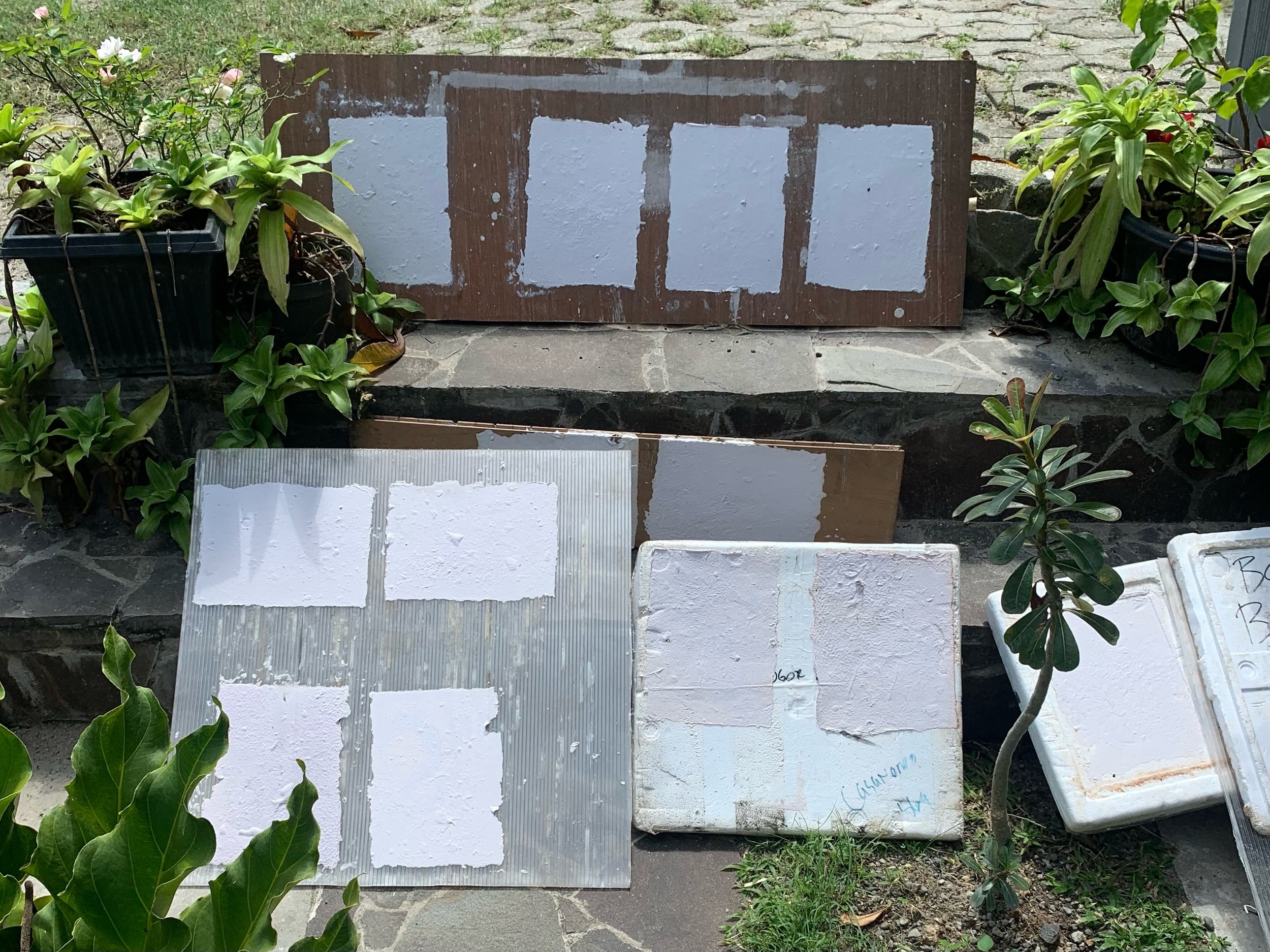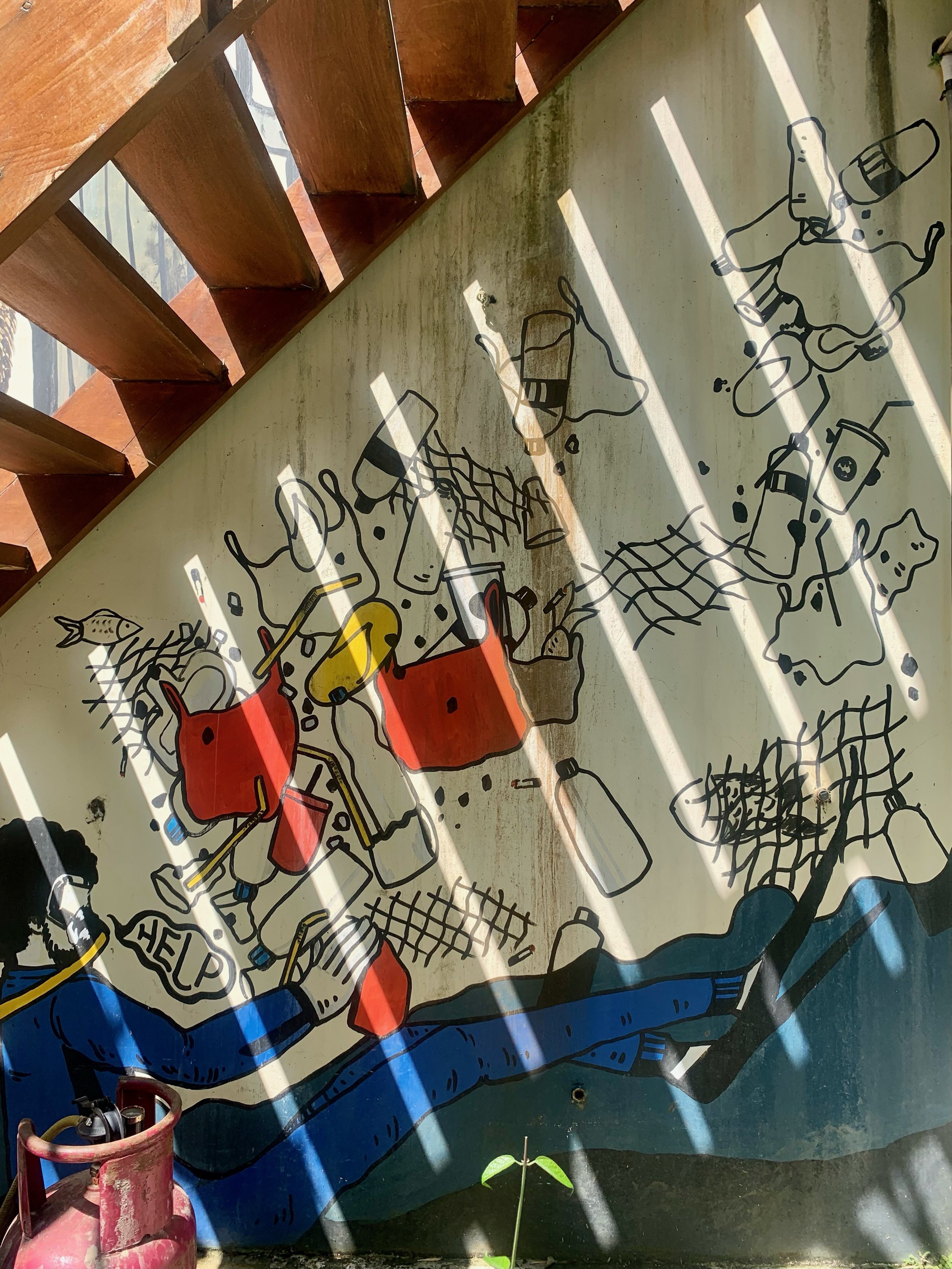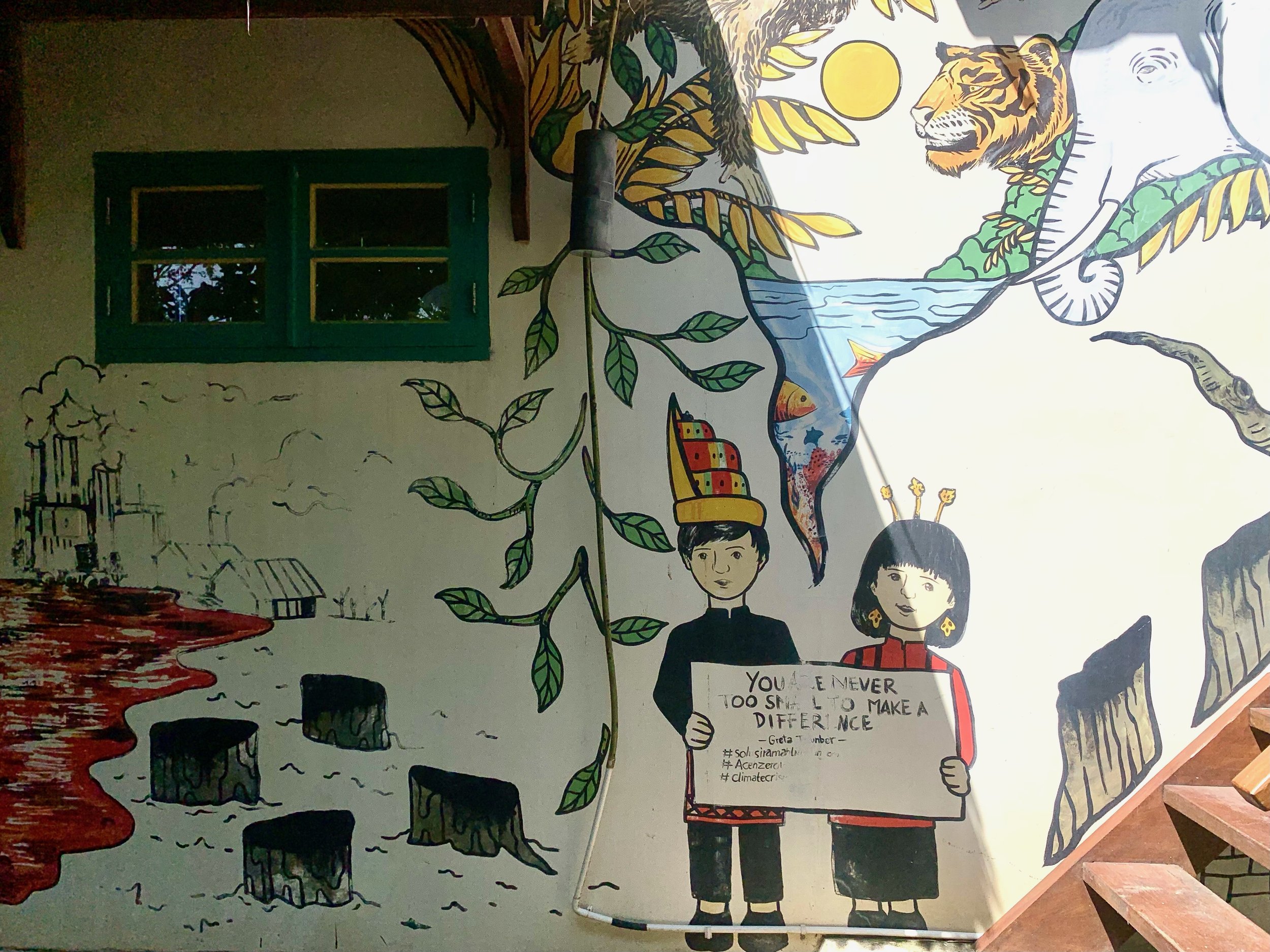Home Is Where the Heart (Community) Is
By Tiffany Yuen ‘23, Taigu Fellow 2023-2025
In Taigu, my bedroom is my comfort zone: I have cultivated a cozy space, a space I have meticulously curated and personalized to represent what “home” feels like to me. The art I’ve collected from places I visit, some art of my own, photos of my family and loved ones, Anokha’s photography (@photonokha), tchotchkes and knick-knacks that make me happy, rocks and crystals I collected from California…they all have a special place on every wall, corner, and surface of my room. For me, the intentional act of creating a ‘homey’ space holds significance, especially as I navigate my daily life in Taigu.
Of course, my home in Taigu extends far beyond these four walls. I find home in the comforting smiles of familiar faces that accompany me on my daily journey–whether it’s the camaraderie with my students en route to class, the creativity fostered at the pottery studio, the calming ambience of the cat cafe, the weekly debriefs with my Chinese teacher, the warm greetings exchanged with owner of the restaurant that has amazing 栲栳栳(kǎolǎolǎo), and dining spots on campus where I am a regular. Home is also in the food I eat. In Taigu, a quaint mom-and-pop restaurant serves 滷肉飯(lǔròufàn), a dish that is reminiscent of my mother’s cooking. Every mouthful of rice and braised pork feels like a warm embrace. In moments of homesickness, the familiar flavors and aromas in this dish takes me back to the evenings spent sharing meals with my family. Culinary anchors, like 滷肉飯and 番茄炒蛋(fānqié chǎo dàn), a stir-fry tomato and egg dish, defines what home means to me far beyond the physical space I inhabit.
滷肉飯(lǔròufàn)
Apart from the solace found in cultural foods, there exists comfort in the universal language of shared experiences. During a heartfelt conversation with a loved one one evening, I felt a surge of emotions and a warm sting in my eyes as I thought of my family and friends in the U.S. That same night, our friends from Pakistan invited my co-fellows and I to Ali’s apartment, where they had graciously prepared us a comforting homecooked meal. As we shared stories, we shared chicken curry, dal, fresh roti, cucumber salad, and milk tea. We played music, we made jokes, we laughed, and we learned more about each other. For me, coping with homesickness means making a “home away from home.” It means finding a community that I can learn from and have a good time with. It means pushing through the ongoing challenges of homesickness and finding points of connection with other people–through cooking and sharing food, through storytelling, through language learning, and through laughter. Home is where I feel wanted, where I am taken care of, and where I find the capacity to take care of other people. Home radiates love: it is where I can truly be myself and extend that authenticity to others.
A spread of delicious Pakistani food, a meal that cured my homesickness
Community, this sense of home, exists everywhere, and it takes courage to seek it out. Through my travels, I feel immensely fortunate and grateful for the opportunities to find community outside of Taigu and Hong Kong. Upon my arrival to Chiang Mai in December, a strong feeling of déjà vu enveloped me, resonating with a profound sense of familarity akin to my experience of studying and living in Thailand two years prior. It felt like coming home. What were once distant memories of Chiang Mai–intimate coffee shops where I would work on my research projects for hours on end, bustling night markets filled with the aromas of meat skewers and fragrant spices, the wats located all over Old Town, and the lively energy emanating from jazz bars and nightclubs–all became vividly real again. In the brevity of my recent trip to Chiang Mai, I am reminded that home and community are unwavering constants.
Haley and I admiring a pug after our cooking class in Chiang Mai, captured by Leo
Living abroad provides me with the opportunity to both learn from and actively engage with diverse communities, cultivating a more nuanced understanding of the world and my role within it. Reflecting on past homestays in Thailand–learning about the ecological relationship between the Karen people and the forests of northern Thailand, exploring the Gulf of Thailand with fisherman at TongTomYai in Chumphon, and farming at the Baan Nook Farmstay in Chiang Rai–the everyday heroes I have met shaped my perspectives on environmental justice and mutual aid. These communities showed me the importance of small-scale conservation efforts, radiating the love and care for people and the environment that encapsulates what I now gratefully consider a part of my definition of home. For me, “home away from home” is in community, laughter, preparing and eating food with friends, and moments of shared authenticity. Looking ahead, I want to continue building on these existing connections and actively seek out opportunities to cultivate new ones.
In Phuket, I noticed a disparity between the local conservation efforts I observed while living with fishermen in Chumphon and the environmental challenges of popular tourist destinations, specifically concerning coral reefs. These reefs, crucial for maintaining the ocean’s biodiversity and providing sustenance for coastal communities, are under imminent threat from climate change, overfishing, and unchecked tourism. Symbolizing the interdependent web of ocean ecosystems, the state of coral reefs prompt reflection on the responsibility individuals bear for their protection. People take care of the environment when they feel connected to it. Therefore, habitat conversation relies on both local initiatives and a collective commitment—a shared responsibility for preserving homelands and ensuring the well-being of people. The severe impact of inconsiderate tourism on the environment and local communities extends beyond environmental degradation to the loss of homelands. Losing a homeland is not just a physical upheaval; it’s an emotional and cultural loss.
Personal and cultural identity is intimately connected to the landscape of one’s upbringing–the place that becomes synonymous with belonging. The notion of home serves as a cornerstone to understanding who we are and where we come from. However, for some individuals, this connection is forcibly disrupted as they are driven to relocate. The devastation of one’s homeland, beyond causing physical displacement, results in a loss of identity itself and a rupture in cultural continuity that echoes across generations. Choosing resilience amidst such devastation becomes an act of resistance, whether it involves remaining in one’s homeland or preserving cultural heritage in a new place. These choices emerge as powerful forms of resistance against forces seeking not only to strip away physical spaces but also the very essence of identity. As communities confront the threat of displacement, the intrinsic connection between homeland, cultural heritage, and the environment emerges as a testament to their resilience.
Traditional Acehnese House where Dina and I lived while teaching English at Casa Nemo
Much like my intentional creation of palpable ‘home-like’ environment in Taigu, my eagerness to connect with and learn from local communities extends to my travels. This January, I had the privilege of teaching English classes to the staff at Casa Nemo in Sabang, Indonesia (special thanks to Ari for the referral!). The genuine eagerness of my students to participate in English lessons and the kindness extended by the people at Casa Nemo, who quickly became my support system and found family, left a lasting impression on me. At Casa Nemo, I gleaned insights into the significance of creating, nurturing, and sustaining a loving and supportive environment–a home for future generations to grow up in. This concept of making a home/placemaking is deeply embedded in principles of love and conscientious environmental choices: it recognizes that caring for the environment directly contributes to the betterment of the community. Every discarded plastic bottle is repurposed into an eco-brick, and discarded paper undergoes a methodical process of blending, shaping, and drying to be transformed into recycled paper. Local residents engage in regular beach cleanups of debris washed ashore from neighboring countries like Thailand and Vietnam. Casa Nemo’s zero-waste inititatives exemplify the parallel between environmental advocacy and consideration for the well-being of people to ensure a legacy of sustainability for future generations. My appreciation for this invaluable experience transcends words: the opportunity to contribute, learn, and grow alongside my friends at Casa Nemo has not only broadened my worldview but has also become a pivotal aspect of my personal journey towards contributing to a more compassionate and sustainable world.
Left: Sheets of recycled paper drying in the sun
Right: The finished product :)
Mural at Casa Nemo: “You’re never to small to make a difference”
As I stand at the intersection of personal growth and cultural exchange, the notion of home has evolved into a fluid and multifaceted idea, encompassing more than just the tangible aspects of my immediate family in San Francisco and Hong Kong. It extends to the comfort found in cultural foods, the bonds formed with my found family in China, Thailand, and Indonesia, and the environment that surrounds me. This expansive understanding of home emerges as I engage with locals abroad—a lens through which my worldview shifts. These connections, forged through shared laughter, shared stories, and shared authenticity, instill in me a deep sense of responsibility. As an educator, my hope is to foster community-building inside and outside the classroom that goes beyond teaching English. This commitment is driven by a desire to reciprocate the generosity shown to me by communities abroad. In essence, it is an ode to the interconnectedness between individuals, communities, and the planet—an acknowledgment that the practice of love constitutes what I call home.









